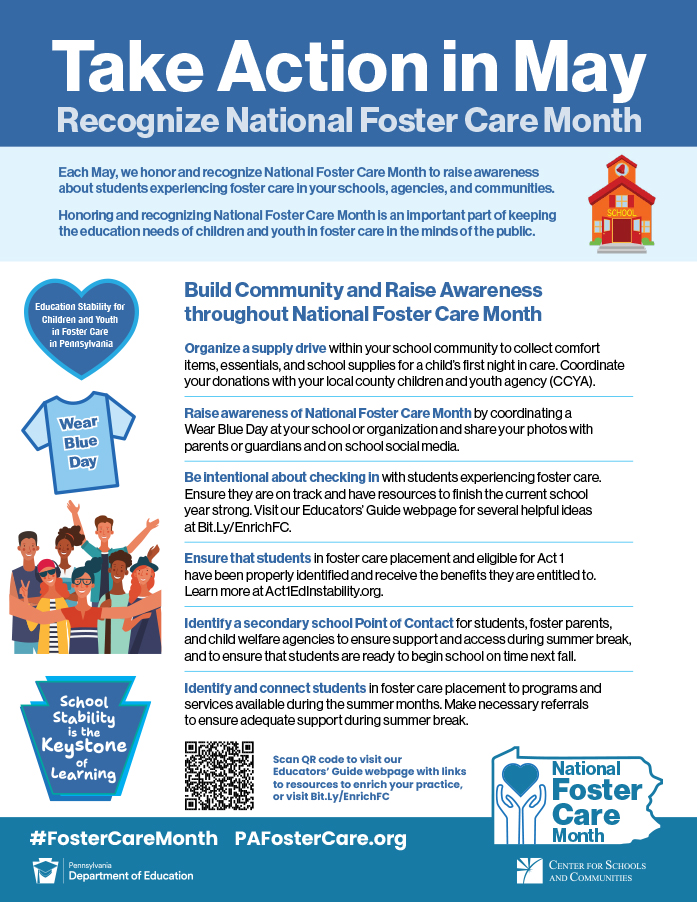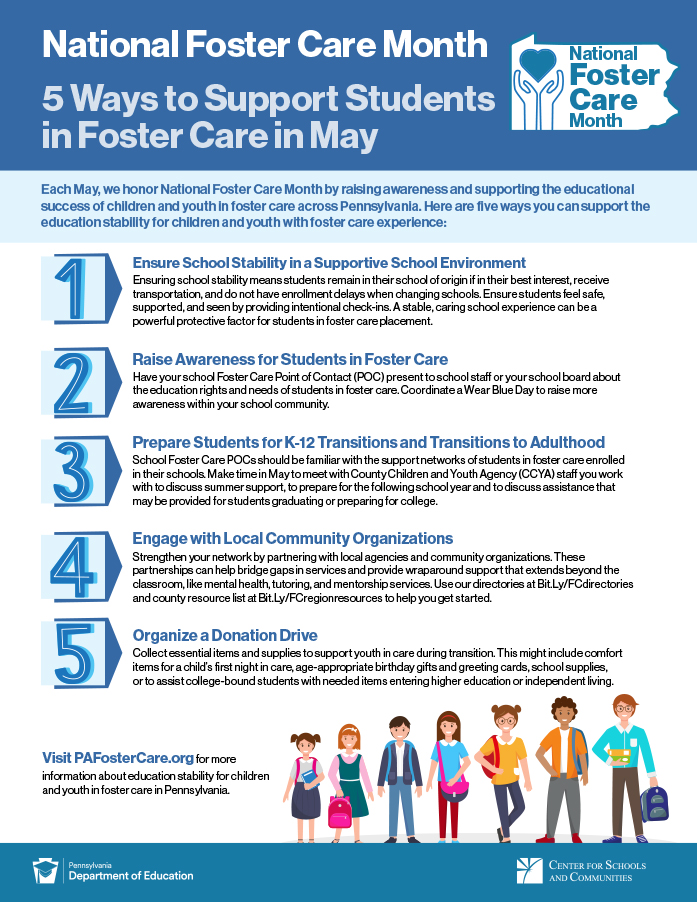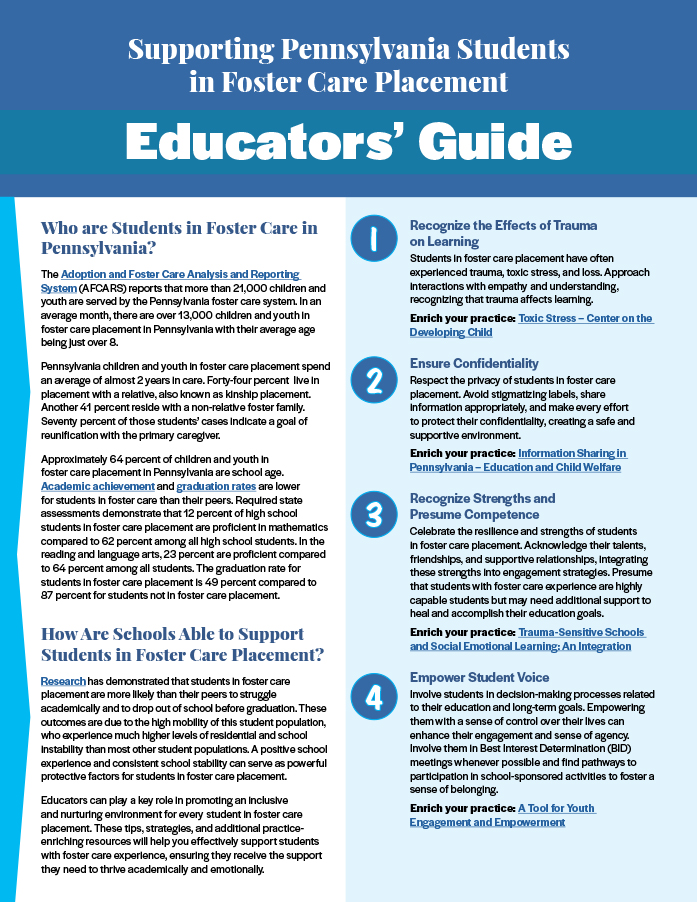5 Ways to Support Students in Foster Care in May
Each May, we honor National Foster Care Month by raising awareness and supporting the educational success of children and youth in foster care across Pennsylvania.
Let’s take action together to ensure school stability and to build welcoming and opportunity-rich learning environments for every student in foster care.
Here are 5 ways you can take action during National Foster Care Month to support the education stability for children and youth with foster care experience:

Ensure School Stability in a Supportive School Environment
Ensuring school stability means students remain in their school of origin if in their best interest, receive transportation, and do not have enrollment delays when changing schools. Ensure students feel safe, supported, and seen by providing intentional check-ins, assigning a trusted adult or mentor, and helping new students integrate into the school community. A stable, caring school experience can be a powerful protective factor for students in foster care placement. Consider starting a “One Caring Adult” campaign to connect students with trusted adults or establish peer-led check-in circles to provide safe spaces for youth.

Raise Awareness for Students in Foster Care
Have your school Foster Care Point of Contact (POC) present to school staff or your school board about the education rights and needs of students in foster care. Coordinate a Wear Blue Day to raise more awareness within your school community and share your photos with parents/caregivers and on school social media. You can also create a bulletin board or awareness wall. Visit the National Foster Care Month website for resources.

Prepare Students for K-12 Transitions and Transitions to Adulthood
School Foster Care POCs should be familiar with the support networks of students in foster care enrolled in their schools. Make time in May to meet with County Children and Youth Agency (CCYA) staff you work with to discuss summer support, to prepare for the following school year and to discuss assistance that may be provided for students graduating or preparing for college. Informing students about Pennsylvania’s FosterEd program and assisting students with FASFA and financial aid assistance are other ways you can help.

Engage with Local Community Organizations
Strengthen your network by partnering with local agencies and community organizations. These partnerships can help bridge gaps in services and provide wraparound support that extends beyond the classroom, like mental health, tutoring, and mentorship services. Consider reaching out to CCYAs, foster care placement providers, foster care support organizations, afterschool programs, teen centers, and local mentorship initiatives. Use our directories and county resource list to help you get started.

Organize a Donation Drive
Collect essential items and supplies to support youth in care during transition. This might include comfort items for a child’s first night in care, age-appropriate birthday gifts and greeting cards, school supplies, or to assist college-bound students with needed items entering higher education or independent living. Assembling and offering welcome kits for new students or coordinating donations with your County Children and Youth Agency (CCYA) liaison are other ways to support students in foster care.





